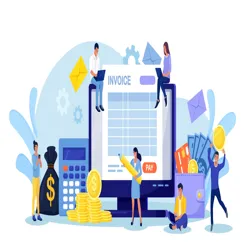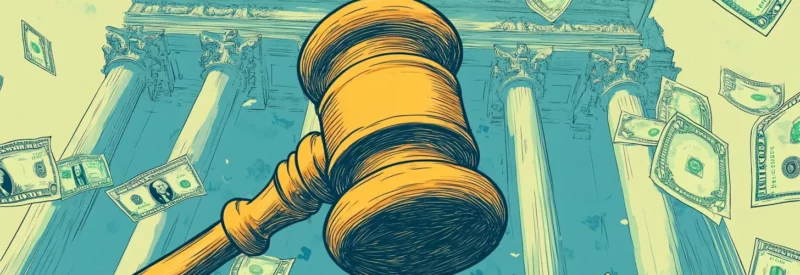TABLE OF CONTENTS
- What Is the Check 21 Act?
- What Is a Substitute Check?
- How Does the Substitute Check Clearing Process Work?
- How Do Mobile Deposits Work with Check 21?
- Check 21: Warranties and Indemnity
- Consumer Protection Provisions
- Check 21 vs. ACH Conversion
- How to Prevent Check 21 Fraud
- Final Thoughts on the Check 21 Act
- Check 21 Act FAQs
The Check 21 Act provides clear guidance for electronic check processing in the United States. Understanding this act is essential for banks and businesses that accept and process checks to avoid liability exposure and other potential issues.
In this guide, we look at the Check 21 definition and how it impacts electronic check processing. We also take a deep dive into consumer protection provisions, check fraud protection, and other related topics.
Let’s get started!

What Is the Check 21 Act?
The Check Clearing for the 21st Century Act is a law that first came into effect in the United States on October 28, 2004.[1]Federal Reserve Banks. “About Check 21 Act“. Accessed on June 24, 2022. It’s intended to improve check processing for banks in the United States.
It allows banks to use electronic checks and substitute checks for processing payments, rather than the original physical checks. Checks can be changed into electronic checks via a process called check truncation. The new substitute check is then usable by financial institutions for processing, which reduces the manual nature of traditional check processing.
The Check 21 Act also outlines the standards required to create substitute checks. For example, what information must be included on the substitute check, as well warranties and securities that are associated with substitute checks. The Check 21 Act is not the actual process of depositing payments. Depositing an electronic check is “a remote deposit.”
What Is a Substitute Check?
A substitute check refers to a re-converted copy of an original check. The Check 21 Act allows banks to convert original checks into electronic checks for processing purposes. If a bank needs to attain another physical copy of a check, it can print a “substitute check.”
For example, if a customer enters a bank and needs proof of a processed check, they may ask the bank for a copy of the check. If the bank does not possess the original copy of the check, they can print the electronic copy of the check and issue it to the customer as a substitute.
A substitute check has similar rights to the original copy of the check. The owner of the check (the person paying) can often use this substitute check as proof of payment.[2]American Bank. “Substitute Check Policy Disclosure“. Accessed June 24, 2022.
How Does the Substitute Check Clearing Process Work?
There are many ways that a substitute check clearing process can work. If a bank receives a check from a customer, they can choose to truncate it (turn it into a digital check) and transfer it to the paying bank for payment.
However, if the paying bank does not want to receive an electronic check, a bank can re-convert it to a physical substitute check, which includes a copy of the front and back of the check, along with other details.
The bank can then process the substitute check in the same way it would process a traditional check. Some banks may choose to provide copies of the substitute check on the customer’s monthly statement.
Keep in mind that this process can vary significantly depending on the number of financial institutions involved. It can also vary depending on each bank’s own preference for processing. Banks must follow strict guidelines, such as identifying themselves as the converting bank and truncating bank.
The FFIEC provides clear examples of how this process may work for a standard payment.
How Do Mobile Deposits Work with Check 21?
While the Check 21 Act does not describe how a mobile deposit works, the overall framework allows for it. As a bank can legally create a digital substitute check with the Check 21 Act, a customer can scan a check using a mobile deposit app.
Check 21: Warranties and Indemnity
While there’s no doubt that the Check 21 Act has made check processing more efficient for financial institutions, it comes with its own risks. If a check is fraudulent and the original copy of the check has been destroyed, this can pose numerous problems. Let’s explore some of the issues and their solutions below:
Warranties and substitute checks
There are two warranties in the Check 21 Act:
- The check must be correctly prepared, according to the guidelines outlined by the Check 21 Act. These guidelines include that the check must conform to industry standards, contain correct images of the front and back, and follow other codes.
- No double debits: a bank cannot be asked to make an additional payment on a check that is already paid.
Indemnity and substitute checks
The indemnity provision in the Check 21 Act states a party’s liability when check fraud occurs. It says that the receiver who saw a loss from a substitute check can file a claim against the bank that converted the original check.
The indemnity amount is based on whether there was a breach of warranty or not. If there was a breach of warranty, the amount of indemnity will be the loss associated with that breach of warranty and the amount of other loss, including costs and reasonable attorney fees, and other representation expenses. In the absence of a breach of warranty, the amount of indemnity will be a sum of the amount lost that is up to the amount of the substitute check, along with interest and attorney representation-related expenses.
Consumer Protection Provisions
The Check 21 Act includes consumer protection provisions that help protect consumers from check fraud relating to the new rules outlined in the act:
Consumer awareness disclosure
Financial institutions may need to provide consumer awareness disclosures that outline consumer rights relevant to the Check 21 Act. This may include consumer rights regarding substitute checks, as well as the consumer expedited recredit rights and other relevant topics.
Consumer expedited recredit rights
The consumer expedited recredit rights provide extra protection to consumers that are victims of substitute check errors. Consumers may use this claim if the following guidelines apply:
- A consumer account is charged for a substitute check that the consumer received.
- The relevant consumer believes this check charge is incorrect or the consumer has a warranty claim under the Check 21 Act.
- The charge results in a loss to the consumer.
- The consumer will need access to an original check to verify the claim.

Check 21 vs. ACH Conversion
There is some confusion regarding Check 21 and ACH conversion but these do not refer to similar processes. Truncated checks that use electronic imagery refer to the Check 21 Act. On the other hand, ACH conversion has its own set of ACH rules.
ACH payments have different clearing times, dispute terms, fees, and eligible transactions.
How to Prevent Check 21 Fraud
If you want to avoid issues associated with Check 21 fraud, it’s best to employ a few security measures to reduce your exposure. Let’s explore some of the most popular security fraud prevention options below:
Use Checks with Modern Security Features
Fortunately, modern checks come equipped with a wide range of safety features. Use checks that have thermochromatic ink, true watermarks, and other security features that make forgery difficult. Responsible organizations use these types of checks to reduce fraud exposure that often isn’t detectable on substitute checks.
Also, as checks with these features have coverage from the Indemnity protection in the Check 21 Act, they are a much better alternative to lesser-protected checks.
Don’t Purchase Laser Checks
Laser checks are generic checks that you can purchase as a business owner. While this is an affordable way to produce checks, it comes with severe safety issues. Anyone can buy similar checks, which means they are an easy target for fraud.
Work With Banks with Lower Sight Review Amounts
If you want the Indemnity provision in the Check 21 Act to cover your checks, the check amount needs to be higher than the Sight Review threshold. As banks have different Sight Review thresholds, it pays to work with a banking institution that has a lower threshold.
Note: a sight review threshold is the dollar amount of the check that the bank must physically inspect to verify its authenticity. For some banks, this sight review threshold might be $5000, meaning the institution must physically inspect all checks over $5000. For other banks, this value may be higher.
Final Thoughts on the Check 21 Act
Now that you understand the fundamentals of Check 21 laws and how to prevent fraud from impacting your business, it’s time to take advantage of the advice in this guide. Make sure to use electronic check payment solutions that have advanced security features to save you from fraud exposure.
Check 21 Act FAQs
We received many questions about the Check 21 Act and related topics. Let’s take a look at some popular questions and their answers below:
What is the purpose of Check 21?
The purpose of the Check 21 Act is to make it easier for banks and other financial institutions to process checks by using digitization. The process of transporting and verifying the original copies of physical checks can take considerable time. The Check 21 rules streamline the process.
What is a double debit?
In reference to the Check 21 Act, a double debit refers to a check being processed twice due to an electronic or substitute check. The double debit warranty ensures that banks do not pay the same check twice.
Is Check 21 processing more efficient?
Yes. The type of check processing that is permissible due to Check 21 is much more efficient for banks. As banks can create digital substitute checks, they don’t need to transmit physical checks to other financial institutions, which saves time and money. This is more convenient for both banks and customers.
What is the difference between Check 21 and converting checks to EFT payments?
The Check 21 Act allows banks to create substitute checks, which improves payment processing speed and is convenient for financial institutions. On the other hand, EFT payments refer to “electronic funds transfer” that involves the electronic transfer of money without the need for checks or bank staff intervention. Substitute check processing and EFT payments are not relevant to one another.
Are substitute checks legally the same as the original check?
Yes, as long as it follows the guidelines outlined by the Check 21 Act, a substitute check is legally the same as the check originally submitted for payment. A substitute check that is legally the same as the original check should state: “This is a legal copy of your check.”
What do I do if I get a substitute check on a fraudulent original check?
If you receive a substitute check on a fraudulent original check, you should report it to your bank immediately.
Can I file a fraud claim with my bank if I have a loss related to a substitute check?
Yes, in many cases you can file a fraud claim if you have a loss related to a substitute check. However, there are conditions that must be met.







